One of the biggest difficulties with taking a bus in Korea is that the system is almost entirely monolingual. It is unclear if this is dependent on the city, the line, or the bus operator company. The larger the city, the more popular the line, and the more popular the location all leads toward audible bilingual announcements through the bus speakers. Another option is the LED display at the front of the bus. In this general shot we can see a display above the windshield and just below a digital clock.
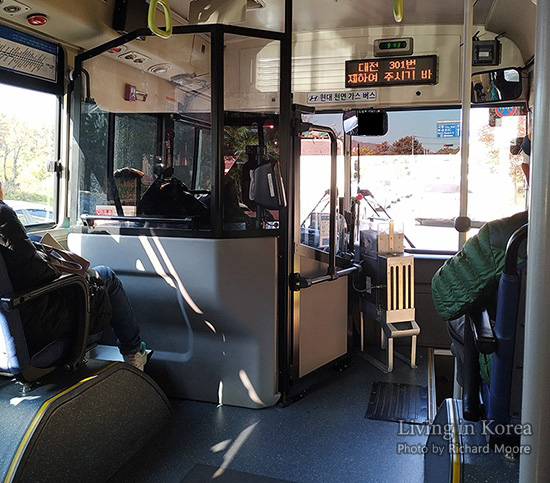
Let’s take a closer look, but not yet fully zoomed in. Now we can more easily see the LED display. Just like the announcements, don’t expect this to be bilingual. Now we know where the sign is, let’s take a look at the two more important messages. If you cannot read Korean, check out our Korean section to give yourself a head start and a few options as to how to study further.

Displayed are two words on the top row and another word or two on the bottom. The first word on the top row is 이번 (이番, ibeon) followed by (정류장, 停留場, jeongnyujang)which means “this stop (is)”. The second row tells the name of the bus stop.

Now that we deciphered the first message, the second message will be much easier to understand. The first word on the top row is 다음 (daum) followed by (정류장, 停留場, jeongnyujang)which means “the next stop (after this stop is)”. The second row tells the name of the bus stop.

The announcement system is automatic and is triggered by GPS. There are several related components in Korean buses and the most obvious stares the driver in the face. Just behind the cash payment spot when we enter the bus is an orange box.
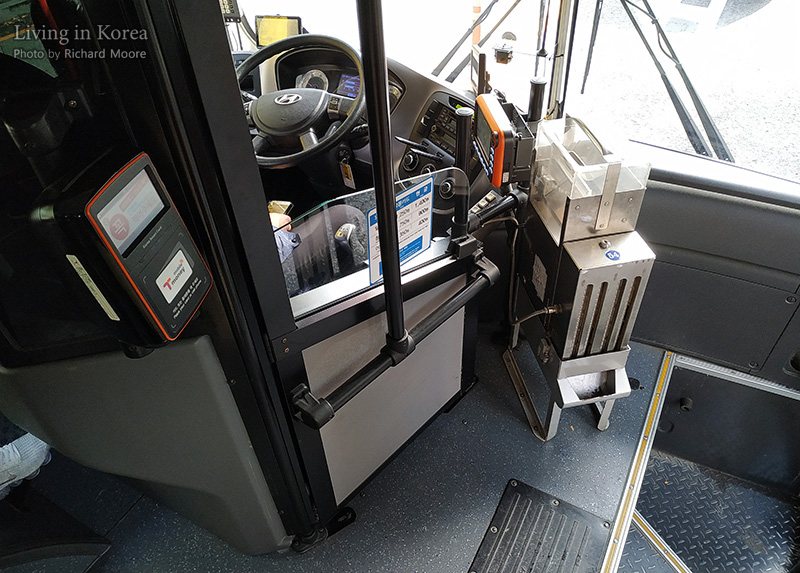
Difficult to photograph, but here is another angle. This is supplied by the transport card company T Money and serves several purposes; including allowing people to charge several passengers (adult and/or children) on one transport card, can see who has tapped their transport card and at which card reading device, and also GPS functions. One of the types of data on these screens is the time from the previously dispatched bus to this bus, and this time from this bus to the next dispatched bus. This information is critical to ensure a steady stream of buses, instead of two buses coming back to back and then nothing for 20 minutes. How closely the driver keeps an equal distance between the other buses on the route, depends on the bus operator and how close they are to the end of the route.
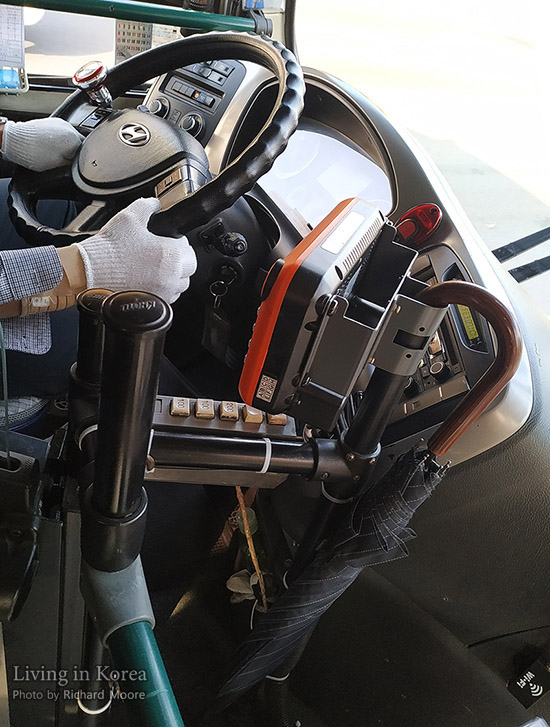
The GPS data goes to a number of locations, including the digital displays at bus stops which tell how long until the next bus comes. If you want to see the image more clearly, click the picture to see a larger version.
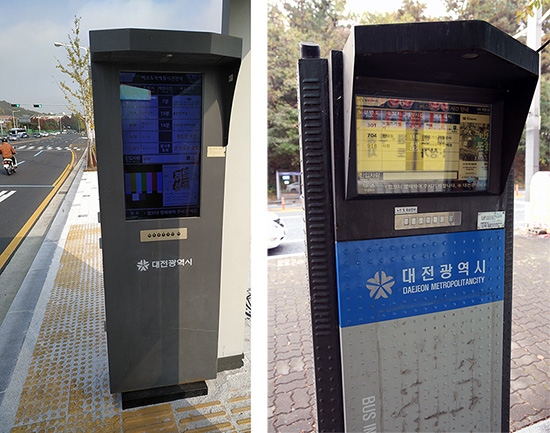
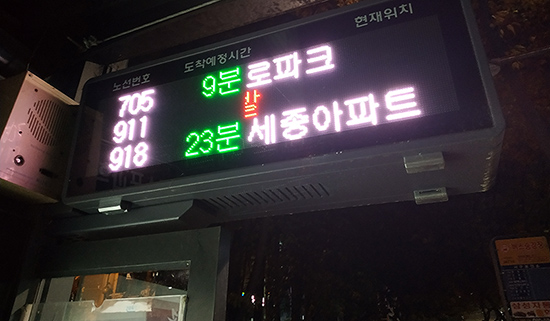
Similar information is available on online map apps and websites. This is how we know bus 802 is 4 stops away – roughly 6 minutes, and bus 918 is going to arrive in 1 minute as it is one stop away. Screenshot copyright Naver Map.
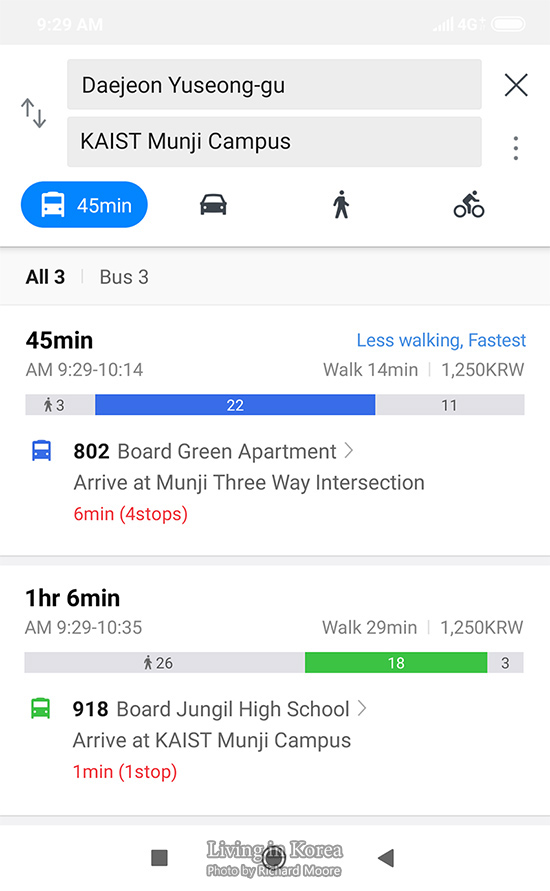
Another location the GPS data ends up are in transport research groups, such as the Transport Operation & Information Service (서울교통정보센터, 서울交通情報센터, Seoul Gyotong Jeongbo Senteo) better known as TOPIS. Their data is from numerous transportation related organizations, including bus management systems (BMS), transport card systems, unmanned surveillance systems, Seoul Traffic Broadcasting, Seoul Metropolitan Police Agency, and the Korea Highway Corporation. Their primary location is under Seoul City Hall in a nuclear bunker but they also conduct research in Jongro.
A significant amount of Korean language transport information is on their website, along with an interactive map with live traffic information and segments are covered in their frequently updated Twitter account. Their CCTV feeds are available online and are used by news outlets when showing traffic conditions and are also available to first responders. During a natural disaster, or in event of a war, the facility changes hands and becomes a command and control center. During normal operation, the main facility is rather quiet and is available for tours to transport officials. They are the face of Korean transportation and the primary contact for technology transfers to other cities.
When you are ready to exit the bus, press the bell to let the driver know you wish to exit and scan your transport card on the way out.